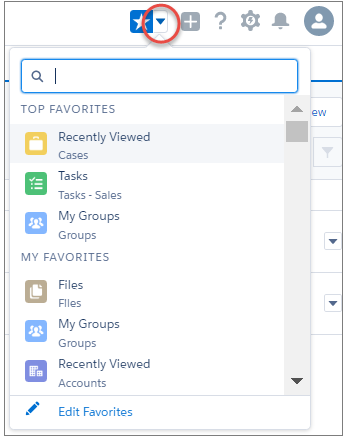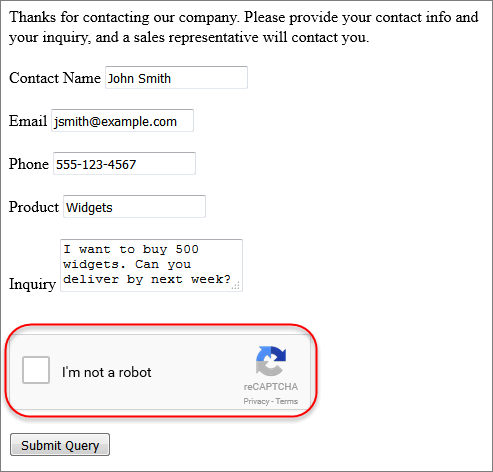This is the second post in a 3-part series on key features for Higher Ed and Nonprofits from the most recent Salesforce Lightning releases. This time around, we’re bringing you some of the best from the Spring ’17 release. If you missed our post catching you up on some of the most impactful enhancements for your organization or institution from the Summer ’16 or Winter ’17 Lightning releases, you can check it out here.
Efficiency Enhancements

You can now add records, reports, lists, etc. to your favorites simply by clicking the star to quickly add the page to your favorites. Favorites are similar to browser bookmarks; they allow you to identify records that are important to you for quick and easy access. This is a handy feature to easily access your favorites list of most frequently used/visited pages in one place. For example, for a career advisor, favorites could be used to flag key reports used to review metrics, a list of open student career advising cases assigned to you, and a list of employers that have provided career services.
This feature extends Path to now add a path to quotes and custom objects. Path enforces the fields required by the page layout, prompting you to enter data into fields when you update a record in a path. If you’ve already used Path with opportunities, you’re likely aware of the great benefits. Now you can apply this capability to any custom object. Path allows you to define a guided process to help users move a record through a pipeline. For fundraisers, Path would be helpful to moves management by providing informational guidance throughout the process. For example, Path could prompt the user on what information is needed and tasks to complete to qualify a prospect.

Data Management Enhancements
*Also available in Classic.To minimize spam leads, you can now include a reCaptcha widget on the web-to-lead form.
I’m so excited about this feature! Salesforce has supported duplicate matching for about two years now. But, with this new feature, it really simplifies the process of identifying and merging duplicates directly from a record. When you enable duplicate and matching rules for accounts and contacts, a record can display a potential duplicates card directly on the record. This enables you to quickly see if any other matching records are in your org (per defined matching rules). For users with appropriate permissions, you’ll then be able to take action and merge records. Note: It’s important that your organization craft a duplicate management strategy, including policies for merging duplicate records.

Viewing an account hierarchy is now supported in Lightning Experience. The account hierarchy is presented as a list view, allowing you to visually see how accounts are connected. By default the account hierarchy list includes the same fields as the Recently Viewed Accounts standard list view. A system administrator can configure account hierarchy to include the key account fields important to your org. Note: the parent-child relationships between accounts need to be manually defined by users.

Search Enhancements
This enhancement to search lets you look for records within a specific object to help minimize “noise” in search results. For example, you may be looking only for contacts within certain records. This feature is helpful for HEDA users when you need to find a contact, but you don’t want to see the Admin Accounts in search results. You can now enter the search keyword, such as a contact’s name or email address, and limit your search to just returning contacts.
*Also available in Classic. This enhancement allows you to search for contacts by specifying the account name, and includes support to search across direct (primary account) and indirect relationships (if you have multiple accounts enabled). So, for instance, if you need to find ‘Jim Smith’ who works for Acme Widgets, you can get to this record faster simply by including the account name in the search. Note: this feature will not work to search account relationships managed via affiliations with NPSP and HEDA.
Engagement Enhancements
There are many new enhancements to email in Salesforce. The Email Composer has been replaced with the Send Email action. With the Send Email action, email layouts can be tailored to a specific email purpose, such as a Prospect Follow-up Email and fields such as subject, email to, from cc, and bcc boxes that can be pre-populated. Actions can be added to any layout where Activities are enabled. The Send Email action also allows you to do the following:
- Select from a pre-formatted list of context-sensitive email templates to send out branded, targeted emails
- Include context-sensitive merge fields in your emails; now you can embed merge fields in an email without having to use an email template
- Choose a record to relate the email to in addition to the recipient
*Also available in Classic. In addition to the powerful features of syncing emails between Outlook and Salesforce, you can also now easily drill down to Salesforce record details right from your Outlook inbox. This includes seeing a record’s Chatter feed, activity timeline, and related lists. Need to make updates to a record in Outlook? No problem. Now you can use in-line editing in Outlook to edit records and updates are saved to Salesforce. Need to create a new contact record? Again, no problem. You can easily create a new contact record directly from Outlook and add the email using Lightning for Outlook. So, there’s no need to toggle between Salesforce and Outlook to manage your records. You can work directly out of Outlook if that’s your preference. Note: Salesforce Lightning for Outlook is an Outlook add-in, supported in Outlook 2016, Outlook 2013 and OWA.
*Also available in Classic. Automatically assign cases to support queues or to users when cases are submitted via Email-to-Case. Previously routing to queues was only supported via Outlook email routing addresses.
Tell us what you think of the newest Lightning enhancements and features by leaving a comment! And, for more information on all new or enhanced features in the Salesforce Spring ’17 Lightning release, you can read the full release notes here. As always, we recommend reading all documentation carefully and testing any new features in a sandbox prior to rolling them out to your users. And, don’t forget to make sure your users are aware of the new features and are trained to use them effectively.
COMING SOON: The Latest from Lightning Part III: Key features and enhancements for System Admins










